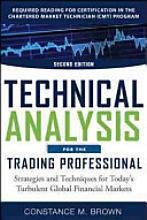|
|
Table of Contents
CMB Composite Index
Introduction
The CMB Composite Index is an unbound momentum indicator introduced by Constance Brown in her book Technical Analysis for the Trading Professional. This new and improved version of RSI attempts to remedy some of the shortcomings of the traditional RSI indicator developed by Welles Wilder. First, Brown added a momentum component to her indicator, which is lacking in Wilder's version. In addition, Brown opted to make the CMB Composite Index an unbound indicator. Traditional RSI, due to its bounded nature, can miss some reversal signals. Brown recommends looking for divergences between the CMB Composite Index and traditional RSI, which can indicate an upcoming reversal.
The CMB Composite Index is typically plotted along with fast and slow moving averages of the indicator line. MA crossovers with the indicator line or each other can signal buying and selling opportunities.
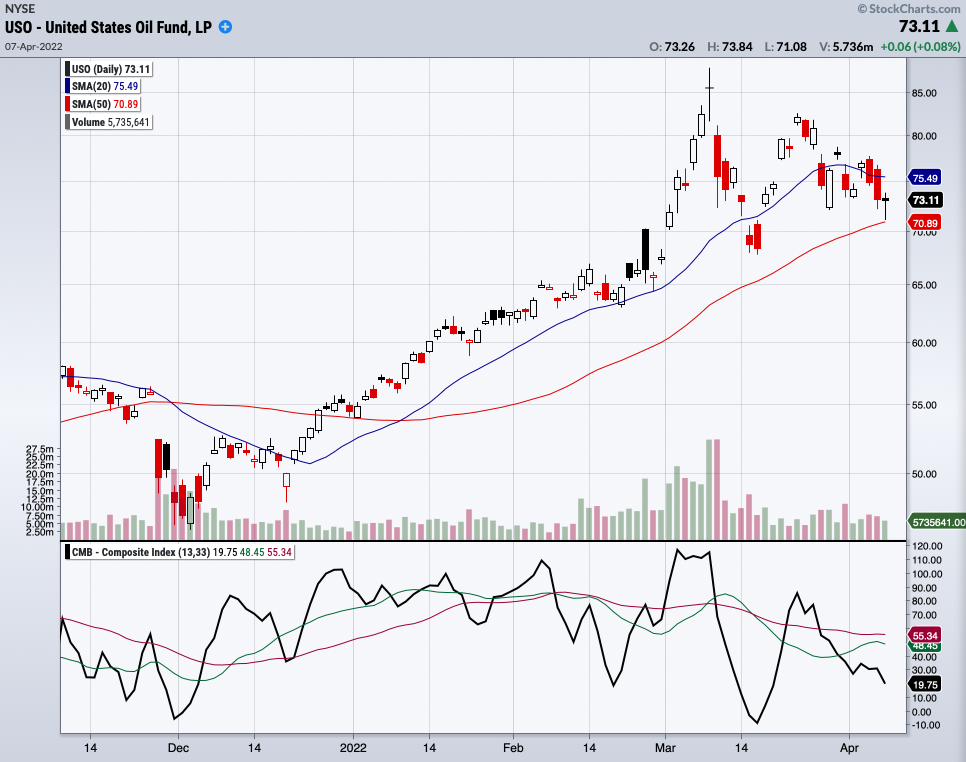
Learn More: Traditional RSI
Calculation
RSI Chg = 9-period ROC of 14-period RSI RSI Mom = 3-period SMA of 3-period RSI Composite Index Line = RSI Chg + RSI Mom Fast SMA Line = 13-period SMA of Composite Index Line Slow SMA Line = 33-period SMA of Composite Index Line
First, the 9-period rate of change is calculated for the 14-period RSI. Using the rate of change rather than the RSI itself allows the value to range outside the typical RSI boundaries.
Second, the 3-period simple moving average of the 3-period RSI is calculated. This adds a momentum component to the indicator value.
Finally, the values from the first two steps are added together to create the Composite Index.
There is no normalization built into this formula, as there is in Wilder's traditional RSI. This means that the values can range outside of the 0 to 100 limits of traditional RSI. CMB Composite Index values can even be negative.
As mentioned earlier, the CMB Composite Index is plotted along with a faster and a slower SMA of the index. Brown recommends 13 periods for the faster and 33 periods for the slower, but these values can be adjusted to make them faster or slower, in order to meet your trading needs.
The parameters of the CMB Composite Index itself cannot be adjusted by the user.
Interpretation
Use the CMB Composite Index to look for divergences that may signal an upcoming trend change; or MA crossovers that serve as buy and sell signals.
Divergences
As with RSI, divergences can be used to spot price moves that are no longer confirmed by momentum. Typically the CMB Composite Index is compared with traditional RSI to spot divergences. In this situation, the RSI functions as the “price” part of the divergence, and the CMB Composite Index is the momentum indicator.
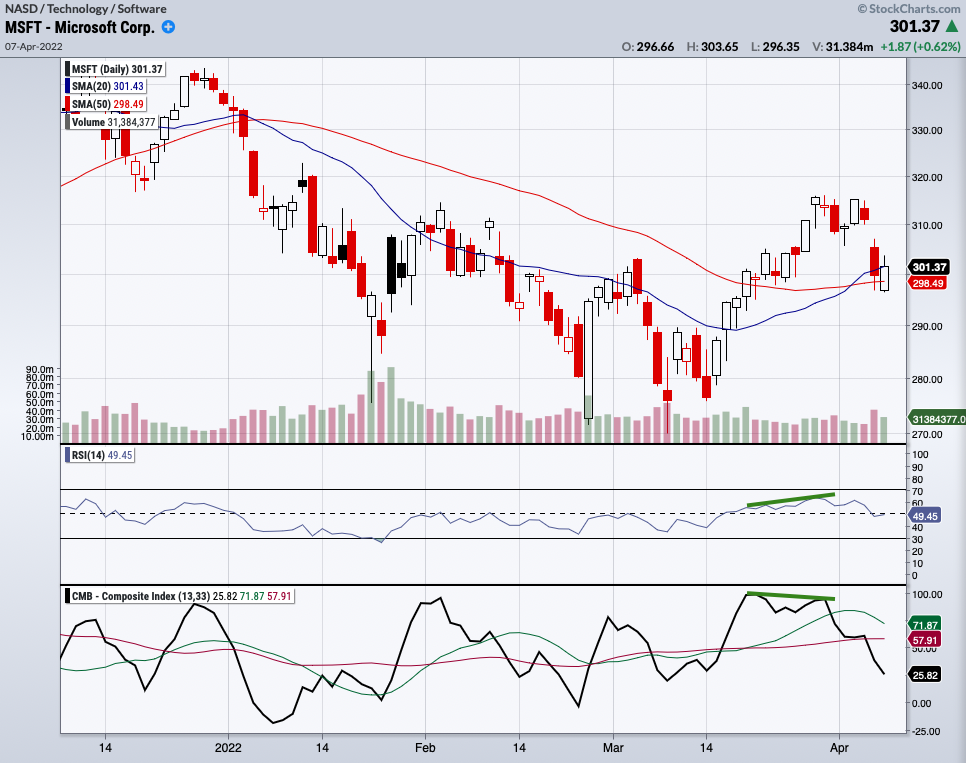
In the example above, the RSI value of Microsoft (MSFT) is making higher highs, but this upward move is not confirmed by the CMB Composite Index, which failed to surpass its previous highs and is recording lower highs instead. This bearish divergence can indicate the end of an upward price move, and indeed, the price fell shortly after.
While the CMB Composite Index is typically compared with traditional RSI, it can be useful to look for divergences with price as well. In the example below, Visa's price has been dropping throughout the month of November. The RSI is essentially flat, and the CMB Composite Index is recording mildly higher lows. In this case, the divergence between price and the CMB Composite Index is much more pronounced than the divergence between RSI and the index. The bullish divergence between V and its CMB Composite Index led to a price reversal in early December.
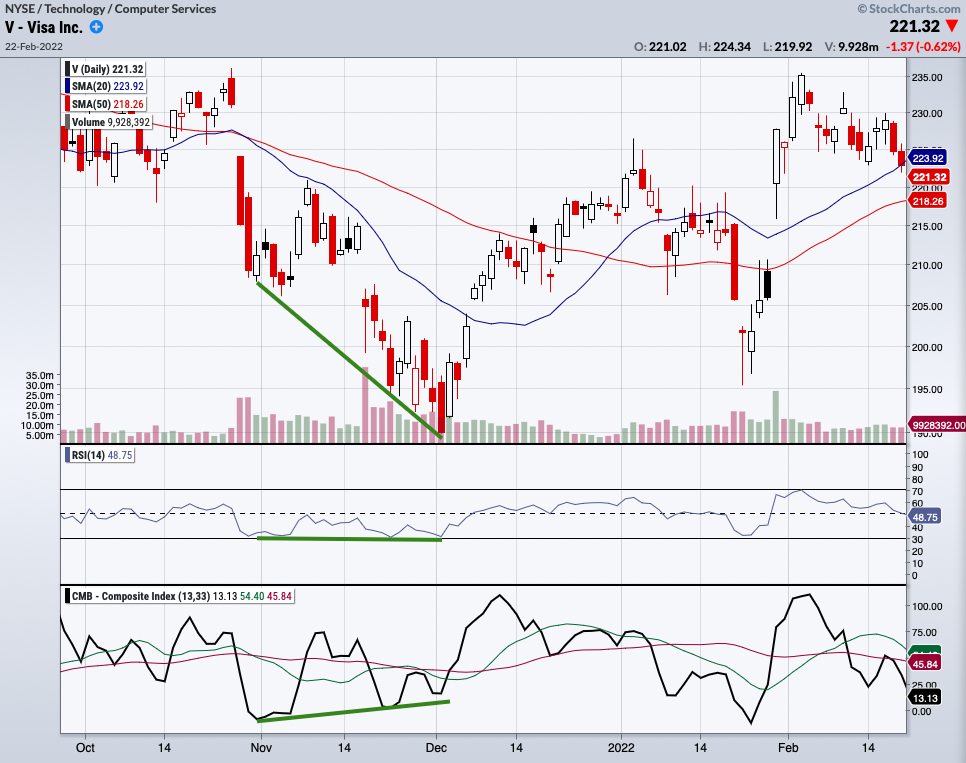
Of course, divergences on their own are not enough to trigger a buy or sell signal; chartists will want to use this technique in conjunction with other confirming indicators.
Learn More: Divergences
MA Crossovers
The CMB Composite Index is plotted along with a fast and a slow moving average of the index line. Crossovers between the index line and its two MAs can function as buy and sell signals.
The CMB Composite Index line crossing above both its MAs is a clear buy signal; similarly, the index line crossing below both MAs is a sell signal. Just like with price-based MAs, a faster MA crossing above or below the slower MA can also be used as a buy or sell signal.
In the example below, the price of International Paper (IP) dropped sharply in early March. Then on March 8 (denoted by the green vertical line) the CMB Composite Index crossed decisively above both its MAs, and the price rose as well. On March 29 (denoted by the red vertical line), the CMB Composite Index crossed back below its faster MA and price began to drop again. However, it would take a few more days for the line to reach and cross below the slower MA.
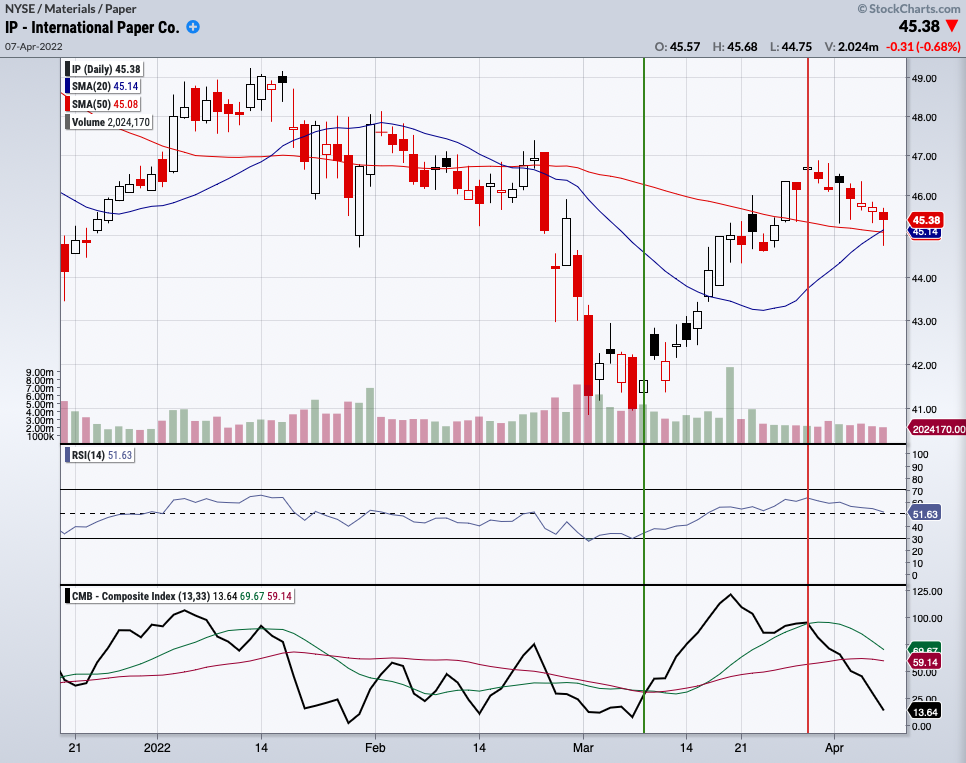
By default, the faster MA is set to 13 periods and the slower MA is set to 33 periods. These settings can be adjusted to make the MAs more or less responsive as fits your timeframe and trading style.
Learn More: Moving Average Crossovers
Conclusion
Constance Brown's CMB Composite Index adds a momentum component and removes the boundaries from traditional RSI in order to catch reversals that might be missed with the traditional RSI indicator.
Divergences between RSI and the CMB Composite Index (or between price and the index) can be used to spot possible trend reversals. Crossovers between the CMB Composite Index and its moving averages can serve as buy and sell signals.
As with all indicators, traders should use the CMB Composite Index in conjunction with other indicators and analysis techniques.
Charting with the CMB Composite Index
This overlay can be added from the Chart Settings panel for your StockChartsACP chart. The indicator can be positioned above, below, or behind the security's price plot. It is often charted along with the RSI, for ease of comparison.
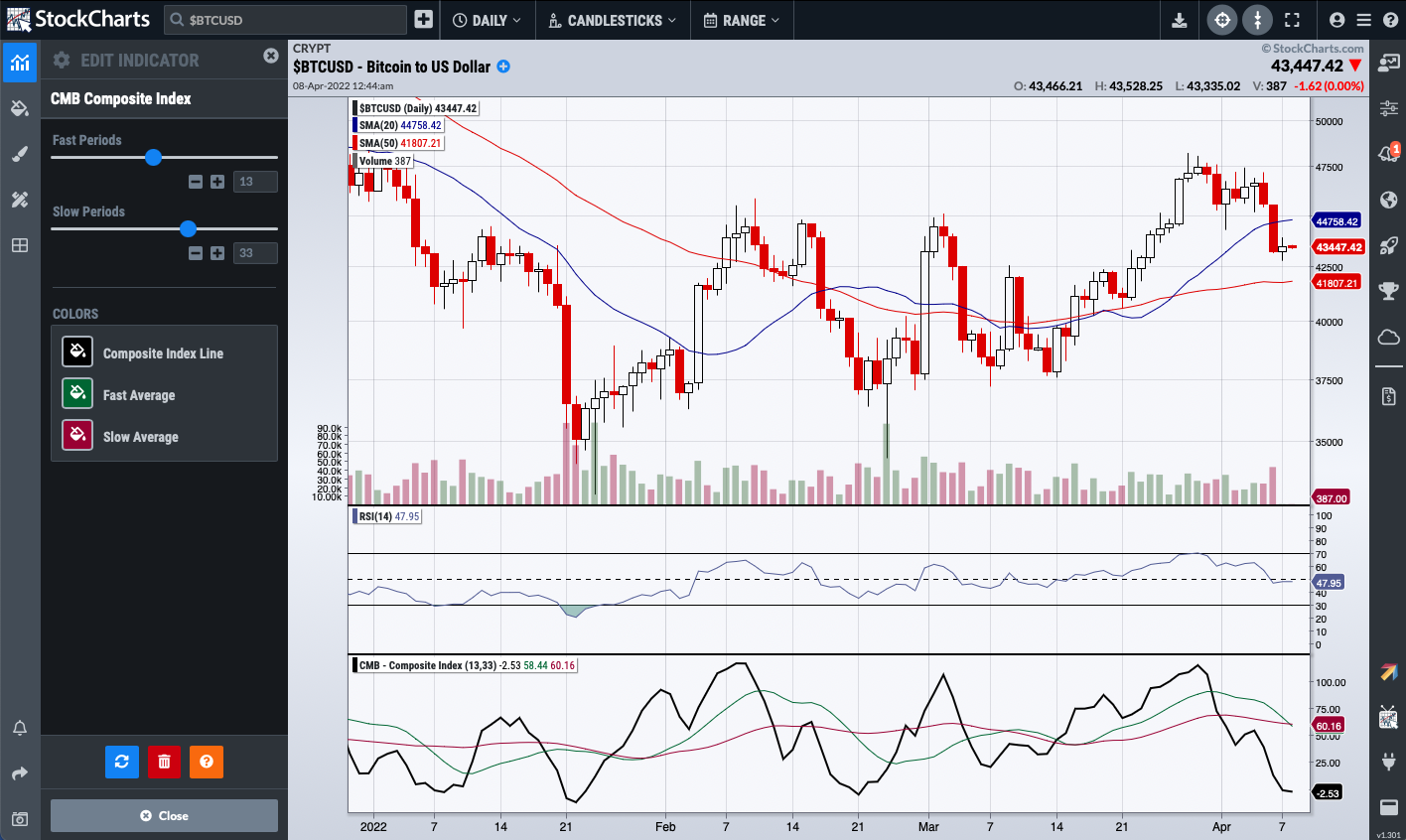
Click here for a live version of this chart.
By default, the indicator is plotted with a 13-period and a 33-period SMA, but the number of periods for both the faster and slower moving averages can be adjusted to meet your technical analysis needs.
Further Study
Constance Brown's Technical Analysis for the Trading Professional takes RSI to a new level with bull market and bear market ranges, positive and negative reversals, and projections based on RSI. Some methods of Andrew Cardwell, her RSI mentor, are also explained and refined in the book.

